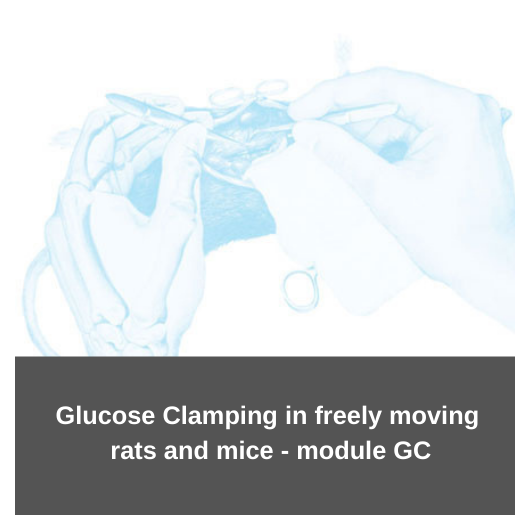
Glucose Clamping in freely moving rats and mice course - module GC course
RRSSC, Instech, and the Novo Nordisk Foundation Center for Basic Metabolic Research are proud to announce a newly created hands-on laboratory course on the glucose clamp technique in stress-free, conscious and freely moving mice and rats. The course is 7-days, and is organised in Almere in The Netherlands. Ask us about training dates!
The course has been created in cooperation with Dr. David Wasserman and the Vanderbilt Mouse Metabolic Phenotyping Center, allowing us to benefit from their extensive experience using the state-of-the-art clamping techniques, which has been continuously developed and refined at the Vanderbilt MMPC for nearly 20 years.
Since its inception in the late 1970’s, the glucose clamp has become the gold standard for assessing β-cell function, insulin action and glucose turnover in vivo. Over the years, the clamp technique has been adapted and modified extensively, to accommodate the vast range of model organisms being used in metabolic research, from mouse to man. However, due to the limited sizes of rodents, particularly of mice, performing a clamp in these species pose a challenging technical barrier to overcome, mainly because the blood volume available for sampling is small, and because the catheters for infusion and sampling need to be implanted surgically. Consequently, clamping rats and mice requires specialized equipment and microsurgical skills in order to obtain reliable and reproducible results.
Thus, the aim of the Glucose Clamp module is to provide the participants with the necessary skills to design, execute, and analyze a glucose clamp experiment in conscious, freely moving rats and mice, taking the animal all the way from surgery to data analysis. Course participants will have ample opportunity to become familiar with the surgical techniques and experimental procedures needed to clamp their rodent species of choice. Furthermore, through lectures on isotopic tracers, experimental design considerations, and data analysis, participants will acquire the knowledge to benefit from the full potential of the glucose clamp technique. With this we hope to aid those laboratories needing to perform glucose clamps on a regular basis in implementing the usage of this technically challenging technique at their institution.
Organizational information
Each participant has an own set-up with operating microscope, all (micro)surgical tools, suture materials and pathogen free laboratory rats and mice required for the course. The number of attendees per course is limited to 8 participants.
The registration fee includes the following items:
- A numbered certificate
- Hand-out of all PowerPoint slides used
- Documentation on the surgical tools, catheters and operating microscopes used
- Lunches, coffee, tea and soft drinks

